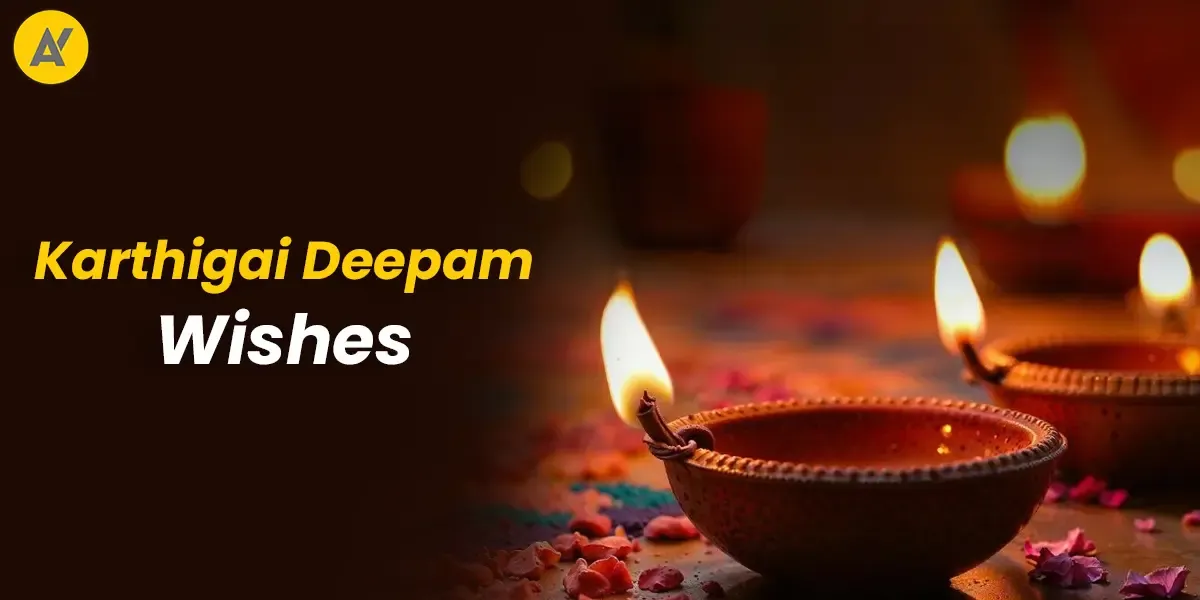
Thursday, December 18, 2025 Paksha:Krishna Tithi:Chaturdashi
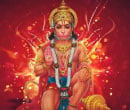
Friday, December 19, 2025 Paksha:Krishna Tithi:Amavasya

Friday, December 19, 2025 Paksha:Krishna Tithi:Amavasya

Sunday, December 21, 2025 Paksha:Shukla Tithi:Dvitiiya

Sunday, December 21, 2025 Paksha:Shukla Tithi:Dvitiiya
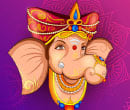
Wednesday, December 24, 2025 Paksha:Shukla Tithi:Chaturthi
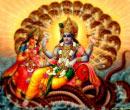
Monday, December 1, 2025 Paksha:Shukla Tithi:Ekadashi
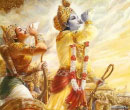
Monday, December 1, 2025 Paksha:Shukla Tithi:Ekadashi
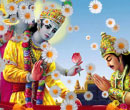
Monday, December 1, 2025 Paksha:Shukla Tithi:Ekadashi
Diwali, also known as Deepavali, celebrates the triumph of light over darkness and good over evil. In 2025, Diwali will be celebrated on 20th October, as Amavasya (new moon) begins that evening and continues till the next day. The Laxmi Puja Muhurat is from 7:08 pm to 8:18 pm, bringing peace and prosperity home.



Duration - 01 Hour 58 Mins
Amavasya Tithi Begins - 11:27 AM on Nov 08, 2026
Amavasya Tithi Ends - 12:31 PM on Nov 09, 2026
Pooja Vidhi and Its Significance
Diwali is the most important festival celebrated in India, but it has equal importance among the Hindus residing in other parts of the world. The day is celebrated to seek the blessings of Goddess Laxmi, the Goddess of wealth and abundance.
How to Perform Laxmi Puja on Diwali?
Laxmi Puja performed on this auspicious day is believed to bring wealth, happiness, and prosperity. Every Hindu household performs this puja with great devotion.
Follow these steps for a prosperous Laxmi Puja Vidhi:
Step 1: Clean and Purify the Home
- Clean the house thoroughly a few days before Diwali.
- On the day of the festival, sprinkle Ganga Jal around the house after every corner has been cleaned to purify the environment.
Step 2: Prepare the Puja Area
- Clean the puja room and set a wooden chowki or stool covered with a red cloth.
- Place a pile of grains in the center of the chowki as a symbol of prosperity.
Step 3: Set Up the Kalash
- Place a Kalash (pot) on top of the pile of grains.
- Fill the Kalash with water and add a marigold flower, supari (betel nut), coins, and rice to it.
- Arrange five mango leaves around the mouth of the Kalash.
Step 4: Place the Idols
- Place the idol of Goddess Laxmi to the right of Lord Ganesha on the chowki.
Step 5: Prepare the Puja Thali
- On a puja thali, draw a lotus with turmeric (haldi).
- Put a pile of grains in the center and place some coins on it.
- Keep the thali in front of the idols.
- Businessmen should place their account books before the idols to seek blessings for success and abundance.
Step 6: Begin the Puja
- Apply tilak to the idols and the Kalash.
- Light a diya filled with oil or ghee in front of the chowki.
- Offer flowers, fruits, coconut, and sweets to the deities.
Step 7: Offer Prayers and Chant Mantras
- Take flowers in your hands, close your eyes, and recite Laxmi and Ganesha mantras with devotion.
- After chanting, offer the flowers to the idols.
Step 8: Offer Panchamrit and Other Offerings
- Offer Panchamrit (a mix of milk, curd, honey, sugar, and ghee) to the deities.
- Apply kumkum, haldi, and rice to the idols.
- Offer a flower garland to the deities.
Step 9: Light Incense and Make Offerings
- Light incense sticks (agarbatti) and dhoop before the idols.
- Offer jewelry, coins, or cash to Goddess Laxmi as a symbol of gratitude and respect.
Step 10: Perform the Aarti and Light Diyas
- Conclude the puja with a Laxmi-Ganesh Aarti.
- Light diyas all around the house to welcome prosperity, light, and happiness.
Mantras and Chants for Laxmi Puja
Chanting mantras during Laxmi Puja helps invoke the divine blessings of Goddess Laxmi and Lord Ganesha. These sacred vibrations purify the mind, attract positivity, and invite prosperity into one’s life.
Here are the traditional mantras recited during the puja:
For Lord Ganesha
Begin the puja by chanting the Ganesh Mantra to remove all obstacles and invite auspicious beginnings:
ॐ गं गणपतये नमः (Om Gam Ganapataye Namah)
Meaning: “I bow to Lord Ganesha, the remover of obstacles and the giver of success.”
For Goddess Laxmi
Invoke Goddess Laxmi, the goddess of wealth and abundance, with this mantra:
ॐ श्रीं महालक्ष्म्यै नमः (Om Shreem Mahalakshmyai Namah)
Meaning: “I bow to Goddess Mahalakshmi, the one who brings prosperity and purity.”
Laxmi Gayatri Mantra
To seek divine grace and peace, recite the Laxmi Gayatri Mantra with devotion:
ॐ महालक्ष्म्यै च विद्महे विष्णुपत्नी च धीमहि।
तन्नो लक्ष्मीः प्रचोदयात्॥
(Om Mahalakshmyai Cha Vidmahe Vishnupatni Cha Dheemahi,
Tanno Lakshmih Prachodayat.)
Meaning: “We meditate on the divine Goddess Lakshmi, consort of Lord Vishnu. May she inspire and guide us toward prosperity and wisdom.”
For Prosperity and Well-being
Conclude with this prayer to welcome abundance, peace, and happiness into your home:
ॐ ह्रीं श्रीं क्लीं महालक्ष्म्यै नमः (Om Hreem Shreem Kleem Mahalakshmyai Namah)
Meaning: “I bow to Goddess Mahalakshmi, who blesses her devotees with wealth, happiness, and spiritual growth.”
Five-day festivities of Diwali
The biggest festival of the Hindus is celebrated over a period of five days. Here are the different festivals that are celebrated with much fanfare during the auspicious Diwali dates and time-
| Date | Tithi | Festival |
|---|---|---|
| 17 October 2025, Friday | Dwadashi | Vasu Baras |
| 18 October 2025, Saturday | Trayodashi | Dhanteras |
| 19 October 2025, Sunday | Trayodashi | Kali Chaudas |
| 20 October 2025, Monday | Chaturdashi | Narak Chaturdashi, Chhoti Diwali, Lakshmi Puja, Diwali |
| 21 October 2025, Tuesday | Amavasya | Diwali Dev Puja |
| 22 October 2025, Wednesday | Pratipada | Govardhan Puja |
| 23 October 2025, Thursday | Dwititya | Bhaiya Dooj |
Astrological Significance of Diwali
Astrologically, the Diwali dates and time hold a lot of relevance. It is from this day that the new lunar calendar starts, marking the beginning of the harvest season in the country. The planetary positions during this time are so auspicious and favorable that one can easily initiate new projects without a muhurat to gain wealth and prosperity.
Furthermore, during this time, the Sun and the Moon are in conjunction, promoting a period of harmony and abundance in everybody's life. These celestial bodies are placed in the Libra zodiac sign, in the Swati Nakshatra, which is a feminine constellation. Libra is a sign of balance, and hence, the onset of this festive season balances love, joy, wealth, and health in people's lives.
Rituals Associated with Diwali Festival
The festival of lights is celebrated with a lot of enthusiasm, and the days leading up to the festival are equally awaited by one and all. Here are some of the most prominent rituals that are associated with the celebrations of Lord Rama's return to Ayodhya-
The festival is also important due to the relevance of the cleansing ritual associated with it. It is performed with diligence as people clean their house to not only remove the dirt but also to let go of the worries of the past. It is symbolic of reinventing oneself before stepping into the light of this auspicious day. Days leading up to the festival involve family members getting together to clean and decorate the house to rid it of all negativities.
Houses are decorated with lights, diyas, and rangoli to welcome prosperity. With Diwali, the seasons take a turn as the winter starts approaching, marking the beginning of a new season, and hence this festival and its decorations welcome newness into every aspect of our lives.
Shopping is another essential ritual associated with this festive. New things including gold, silver, clothes, electronics, etc., are bought during this festival, especially on the occasion of Dhanteras, as it is considered auspicious and is said to attract abundance in our lives.
Sweets and desserts are flooded in the markets as well as within the houses. Gujhiyas, rasgullas, laddoos, barfis, and more leave everyone's mouth-watering during this festive season. Gifts, primarily containing sweets, are shared on this occasion among near and dear ones to add a touch of sweetness to the day and our relationships.
The joyous tradition of bursting firecrackers is especially popular among kids, but traditionally it is believed to be significant to ward off evil energies. The illuminated sky with fireworks is a sight to behold. However, the need to practice moderation is imminent as firecrackers are not good for the environment and must therefore be avoided.
Beautiful rangolis made out of colors and flowers are an important part of the list of rituals of this day. Intricate designs are created at the entrance of the house to welcome Goddess Laxmi on this day. Rangolis are further decorated with diyas to leave the visitors enchanted as they come to visit on this day.
Legend Associated with Diwali Festival
We are all familiar with the fact that this festival is celebrated to commemorate the return of Lord Rama after his exile of fourteen years to the kingdom of Ayodhya. However, there is another legend pertaining to the rebirth of Goddess Laxmi on this day. The Goddess of fortune, as the story goes, left the divine world and immersed herself into the ocean due to the arrogant behavior of Indra. Without the blessings of the Goddess of prosperity, the world was in disarray, pushing it into darkness. All the Gods desperately prayed to her to come back. After thousands of years, Goddess Laxmi was finally reborn on the petals of a lotus flower. With her rebirth, the world once again received her blessings, and it is for this reason Laxmi puja holds such great relevance on this day.
The festival of Deepavali brings light and abundance into the hearts and souls of every devotee. The spell-binding atmosphere during this five-day festival is eagerly awaited each year as it brings people together, sharing their joys and happiness.
To know more about the Diwali dates and time, connect with Astroyogi astrologers right away!
Festival List
- Nag Panchami
- Raksha Bandhan
- Janmashtami
- Ganesh Chaturthi
- Onam
- Pitru Paksha
- Shardiya Navratri
- Durga Puja
- Dussehra
- Karwa Chauth
- Dhanteras
- Diwali
- Govardhan Puja
- Bhai Dooj
- Chhath Puja
- Tulsi Vivah
- Guru Nanak Jayanti
- Christmas
- New year
- Lohri
- Pongal
- Makar Sankranti
- Vasant Panchami
- Shivratri
- Ramadan
- Holi
- Good Friday
- Navratri
- Gudi Padwa
- Ugadi
- Vaisakhi
- Ram Navami
- Mahavir Jayanti
- Hanuman Jayanati
- Buddha Purnima
- Akshay Tritiya
- Shani Jayanti
- Guru Purnima
- Hariyali Teej
Talk to Astrologers
View AllFAQ
Diwali 2025 will be celebrated on 20th October, as the Amavasya Tithi begins that evening and continues till 21st October.
The Laxmi Puja Muhurat for Diwali 2025 is from 07:23 PM to 08:27 PM, considered the most auspicious time to worship Goddess Laxmi.
Popular Diwali delicacies include laddoos, barfis, gujiyas, chaklis, samosas, and soan papdi, enjoyed while celebrating the festival with family and friends.

















 Team Astroyogi | Thu, Dec 04, 2025
Team Astroyogi | Thu, Dec 04, 2025